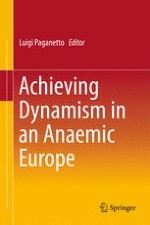2015 | OriginalPaper | Buchkapitel
Trade Margins and Exchange Rate Regimes: New Evidence from a Panel VARX Model
verfasst von : Lilia Cavallari, Stefano D’Addona
Erschienen in: Achieving Dynamism in an Anaemic Europe
Aktivieren Sie unsere intelligente Suche, um passende Fachinhalte oder Patente zu finden.
Wählen Sie Textabschnitte aus um mit Künstlicher Intelligenz passenden Patente zu finden. powered by
Markieren Sie Textabschnitte, um KI-gestützt weitere passende Inhalte zu finden. powered by
